December 10, 2011
Conway Observatory, Lowell, Indiana
I’ve seen lunar eclipses before, in October 2004 (the night the Red Sox won the World Series), and was watching a few minutes March 3, 2007. I had never seen one through astronomer’s eyes, though. In January 2008, my interest in astronomy was fully reborn when I took an introductory astronomy course at Purdue University North Central. Conveniently, while I was in that class, there was another total lunar eclipse favorable for Northwest Indiana. I had every intention of catching it.
Instead, on the night of February 20, part of the Valparaiso area was hammered with over 6” of lake effect snow. Weather reports around the region gave me reason to think the snow wouldn’t last, and that I might see something before going to bed. I constantly shoveled the quickly falling snow so that I would have someplace to observe from if and when the skies finally cleared. One of my ex-girlfriends even text messaged me that she could see the eclipse clearly through her window outside of Lowell. All of my work went for nothing, though, as the snow fell late into the night, after the eclipse was over.
Last year’s solstice total eclipse would have been one for the ages, with the Moon nearly as high as it ever gets, on the longest night of the year. Again, it was not to be. All of Northwest Indiana and Chicago were under snowfall. It wasn’t much snow, but the roads were treacherous. Driving to a more favorable location was out of the question.
Finally, for the last total lunar eclipse until April 2014, I was treated to clear skies. The catch for this eclipse was that in Northwest Indiana, the eclipse didn’t really begin until just before moonset and sunrise.
I went outside around 2 AM CST for some lunar and planetary observing before the eclipse. I planned to observe from home, but Jupiter was already low in the sky. Jupiter was going to be disappearing behind neighboring houses, and I was almost certain the Moon would be setting in an even worse area to the northwest. I packed my gear and drove to Conway Observatory to take advantage of it’s low horizon in mostly open fields.
I arrived at 3:20 AM, and took my time getting ready. With the Moon setting so far to the northwest, I wouldn’t be able to use the 16” observatory scope, since the building would be blocking the view. I set up two of my telescopes in the basement, leaving the heat off so that they would be acclimatized when it was time to observe. I checked out Mars and Saturn with the 16”, but not for long. Accuweather said Lowell’s temperature was 12F, with a “real feel” of only 7F. It was too cold to stay out observing for long periods.
Twelve degrees Fahrenheit. Brrr…
I sat in the relatively warm control room browsing the internet, and gathering details of the eclipse to assist my observations. After 5 AM, I took my 6” Dob outside to document the Moon before the eclipse began. After getting my initial lunar images, Mars and Saturn were briefly targeted before retreating into the observatory to warm up again. (I can’t stress enough that I was bundled in many layers, and I was still freezing).
Control pictures of the Moon, before the eclipse started.
The Chicago area was just far enough west to expect to see anything at all. The Moon would enter the penumbra at 5:31 AM CDST, but of course, that is an unobservable event. Most predictions for the region said no noticeable darkening of the lunar surface would occur until around 6:45 AM. Moonset in Lowell was at 7:03 AM, and sunrise at 7:04 AM. Even as the Moon entered the umbra, daylight would be brightening the background sky, lending some uncertainty that much of anything would be observed. Nonetheless, at 6:19 I thought I could tell that the Moon was darkening slightly. I almost thought I was imagining the effect, but some of the pictures I captured had a “ghost” image of the Moon. Those images seem to confirm that the northeast lunar limb was indeed darker than the rest of the satellite.
Moonset: 7:03AM CST.
 |
| Sky & Telescope |
 |
| http://www.curtrenz.com/astronomical.html |
The southeastern sky beginning to brighten.
Can’t tell here, but I swore the Moon had started to darken slightly.
Moon over the NIRO observatory. The “ghost” image seems to show a darkening of the northeastern lunar limb.
Still brightening.
The partially eclipsed Moon over the 16” telescope, and the Hunter Astrophoto Lab.
Again, notice the ghost image of the Moon.
Finally, a tiny bite seems to taken out of the Moon.
By 6:38 AM it was clear that a small bite had been taken out of the Moon. It was also clear that the Sun was racing up to the southeast horizon as quickly as the Moon was sinking to the northwest horizon. It’s amazing just how fast the Moon drops out of sight when you’re intently observing. With the Purdue University Calumet research observatory just to the northwest of Conway, I had a photogenic conjunction to capture. I also roamed to various points around the observatory to capture the disappearing Moon from interesting vantages. How many opportunities would I have to catch a partially eclipsed Moon setting over these wonderful astronomical facilities?
Strong evidence of Earth’s shadow now, but the Moon wouldn’t be up much longer.
The combined effects of daylight and Earth’s shadow are starting to wash out the lunar surface.
Just about to lose the Moon to the horizon.
The Moon was now gone from ground level.
I caught a few fleeting seconds of The Moon from the pedestrian ramp.
How fitting that I saw Earth’s shadow, the Belt of Venus?
Sunrise.
Frosty telescope.
Cold astronomer checking out the eclipse online.
Checking out the Sun before heading home.
I finally got to see part of an eclipse through astronomer’s eyes. Being so cold, I’m almost glad it was short, and just before sunrise. A totally visible eclipse would have either turned me into popsicle, or filled my 8GB SD card on my camera. It’s going to be a long wait until the next total lunar eclipse in April 2014. This was just enough to tide me over until then. Of course, we do have a partial eclipse early morning June 4, 2012. With the Venus transit June 5, those will be a busy couple of days.




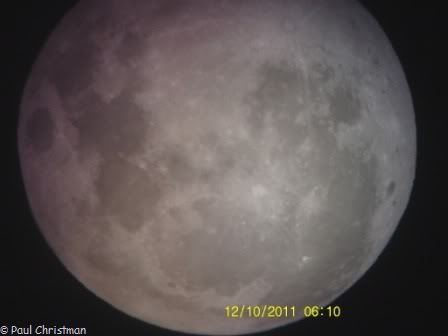
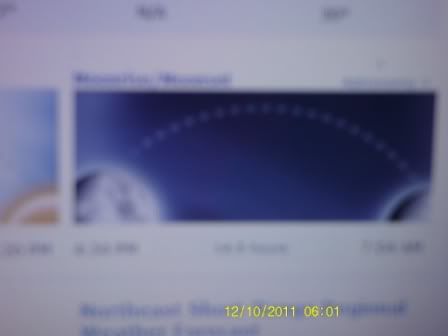

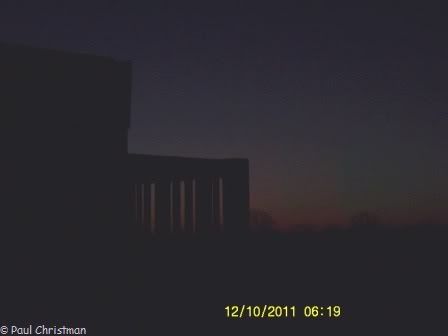
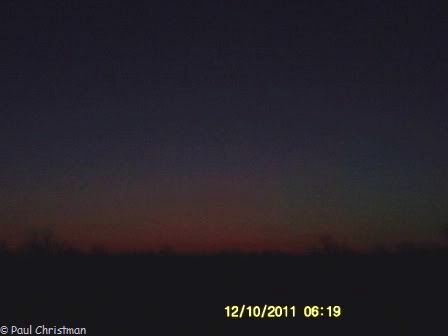
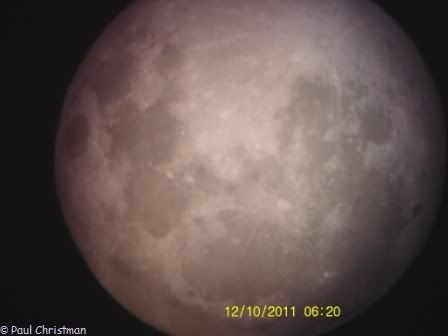
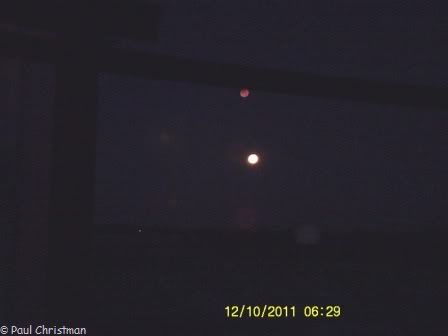
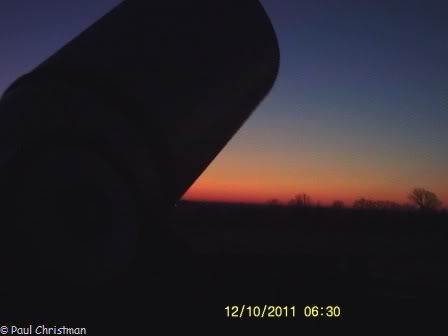
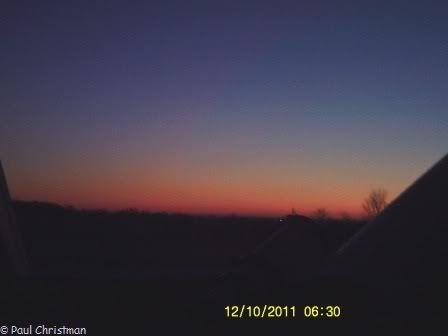
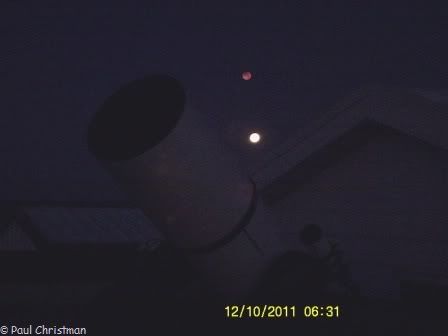
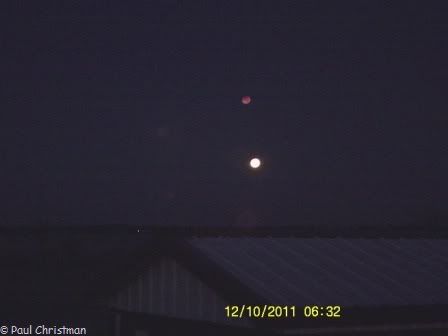

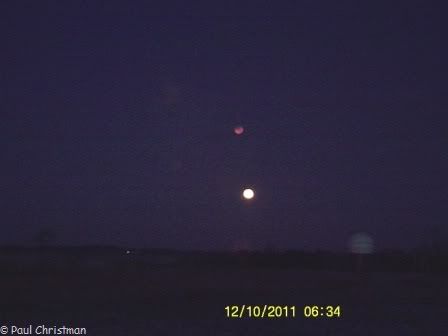
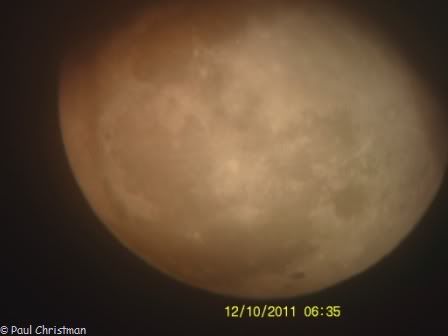
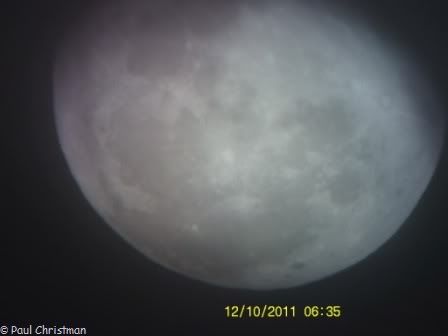
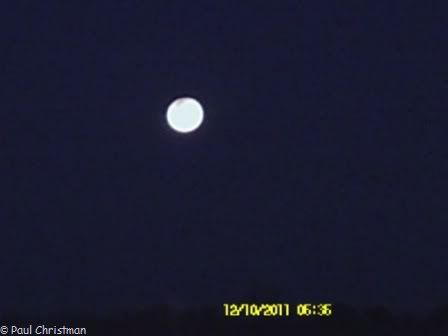
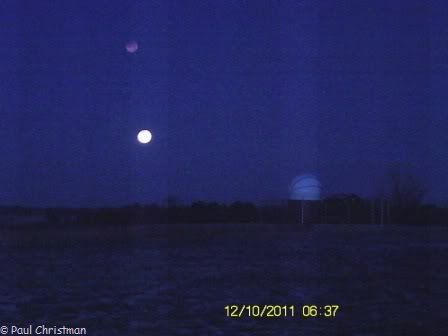
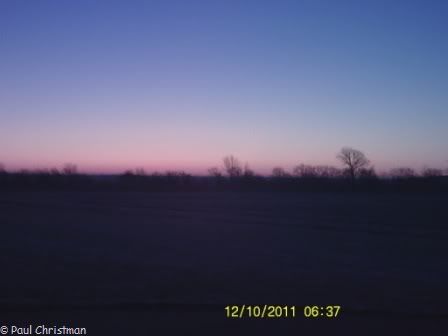
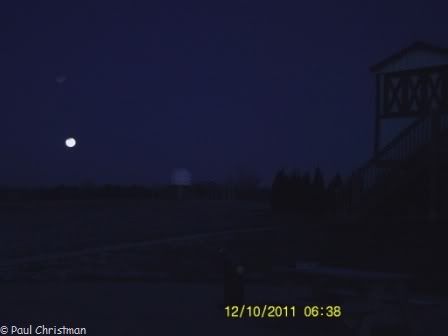
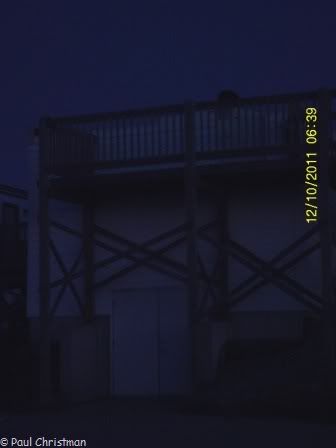
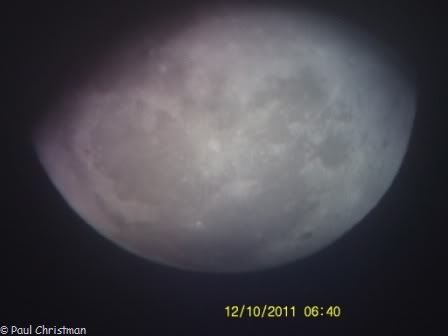
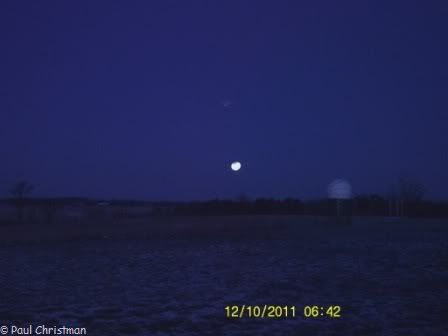
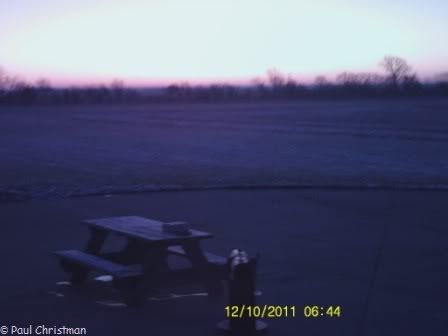
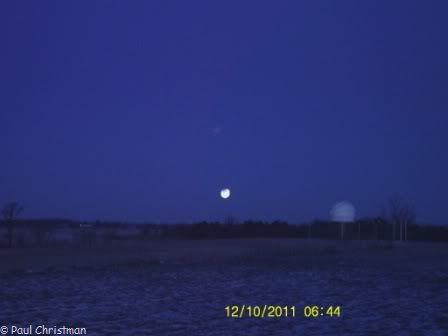
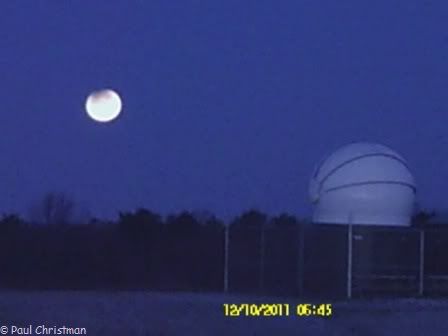

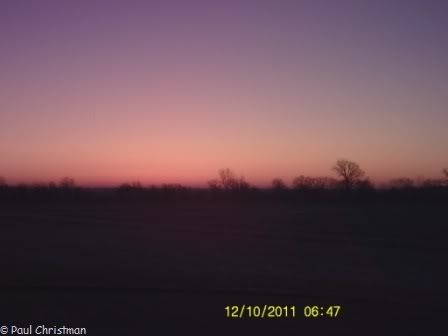
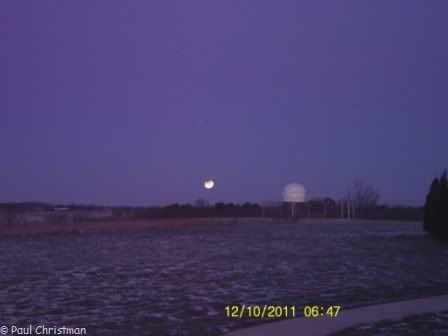
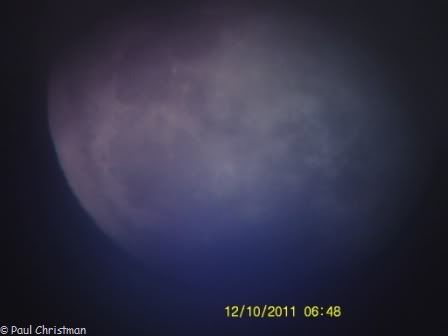
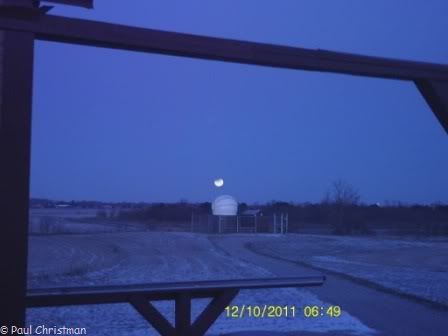
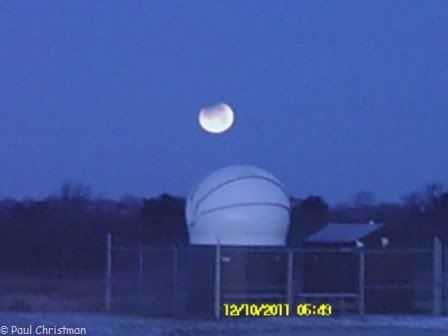
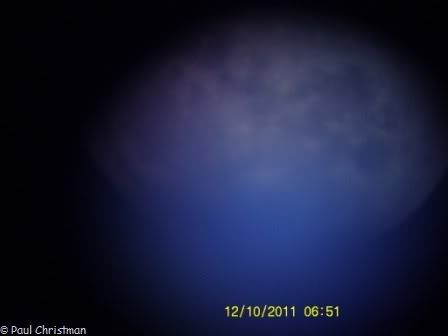
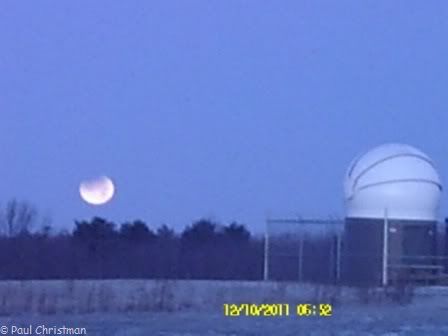
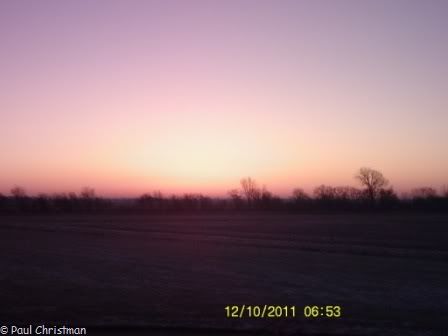
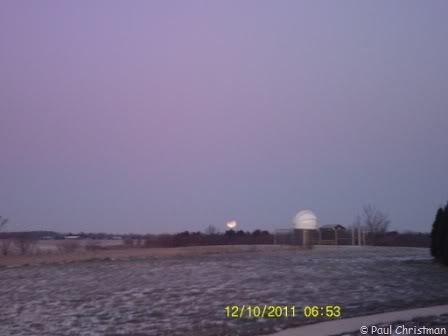
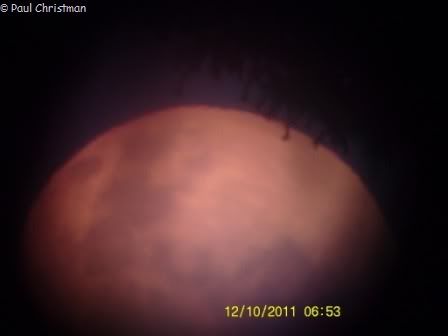
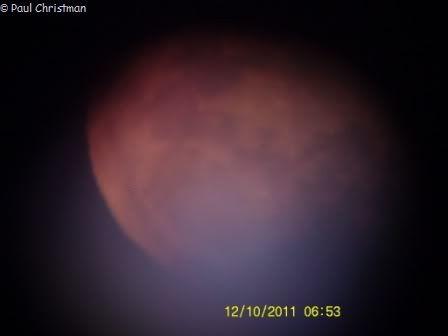
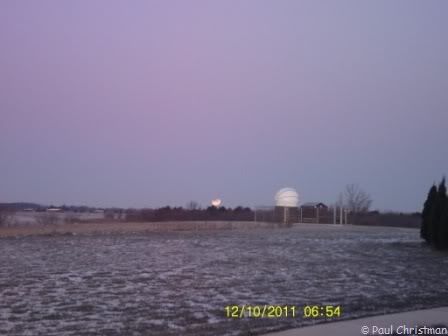
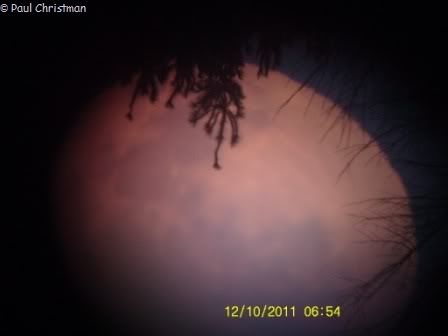
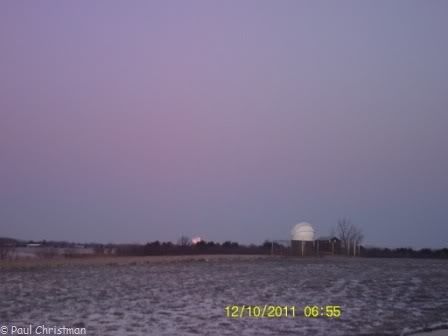
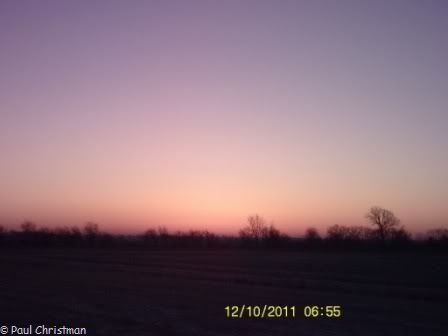
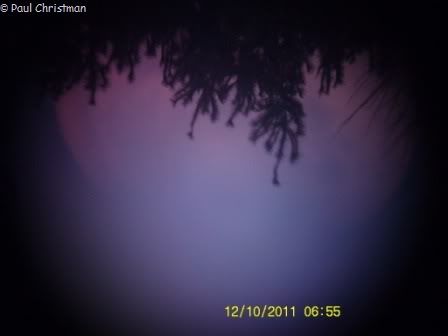
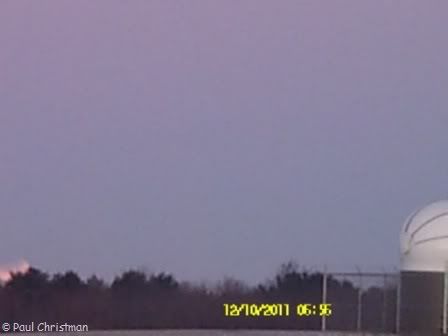
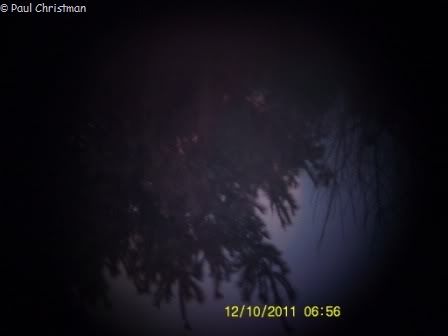
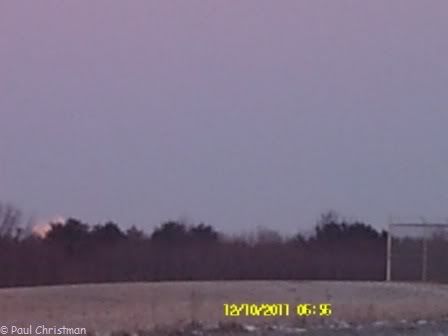
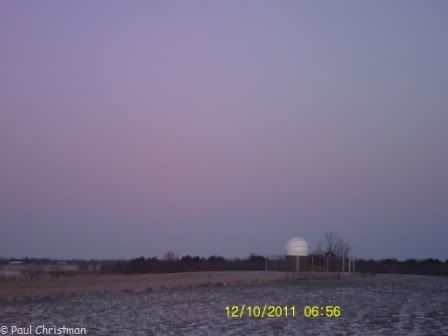
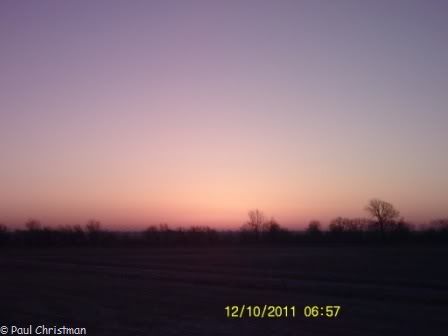
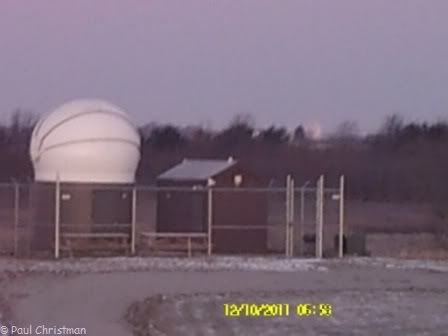

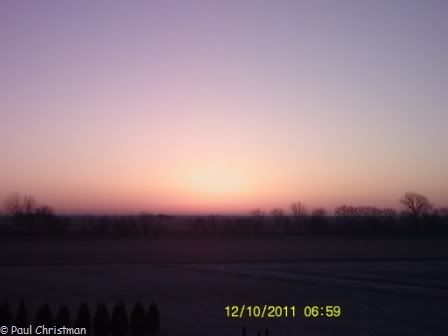
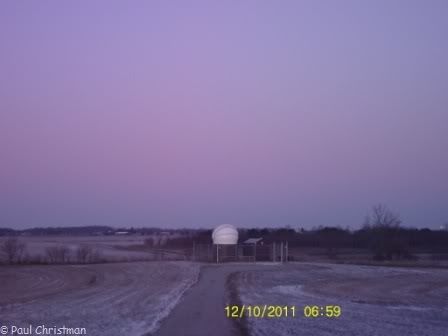
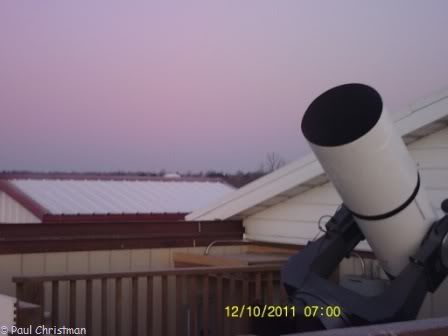
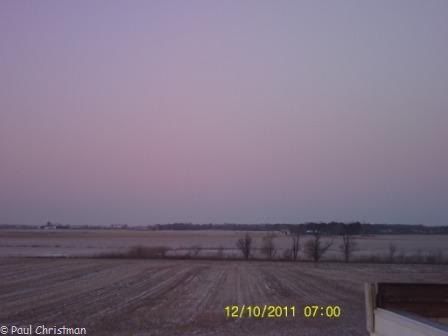
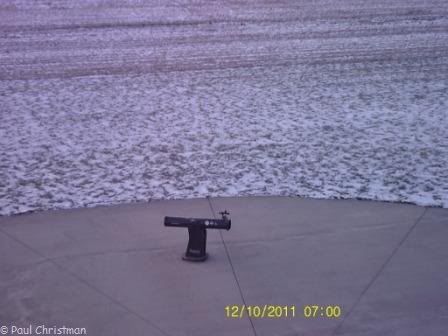
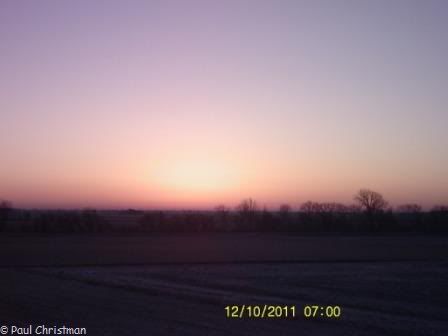
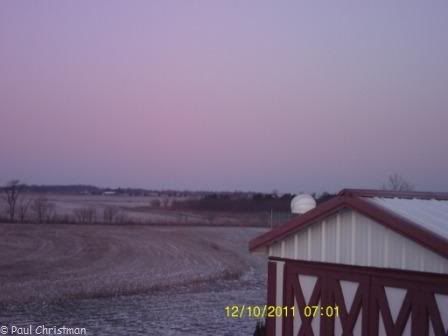

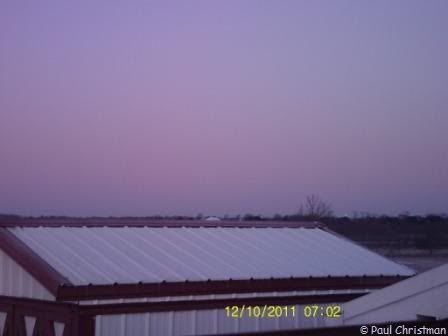


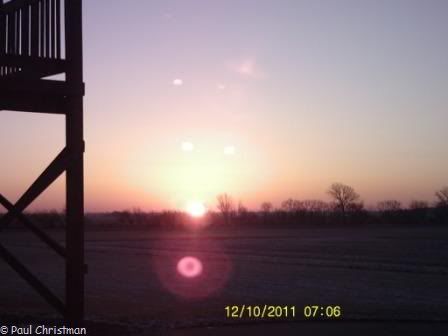
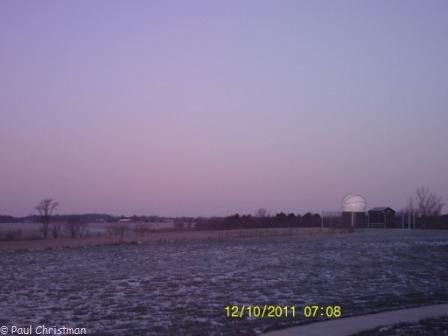

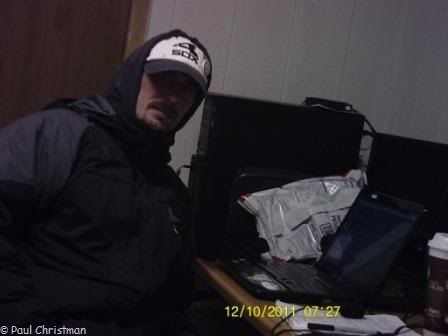
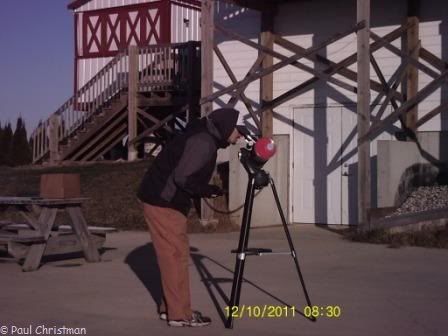
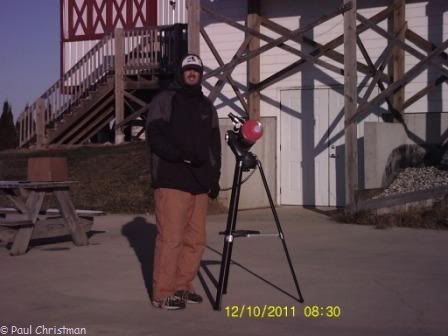
No comments:
Post a Comment